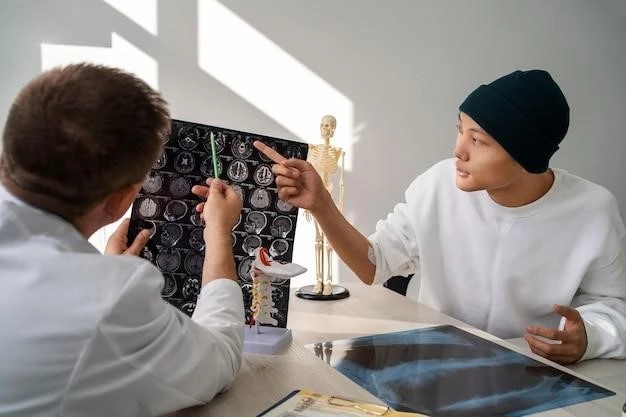Overview of Metaphyseal Chondrodysplasia Spahr Type
Jansen type ー severe type, irregular mineralization in the metaphyses. Spahr type metaphyseal chondrodysplasia is an extremely rare inherited disorder characterized by abnormal development of the cartilage and subsequent bone formation.
Metaphyseal Chondrodysplasia Spahr type, described by Spahr and Spahr-Hartmann in 1961, is an extremely rare genetic disorder characterized by abnormal cartilage development, resulting in distinctive bone abnormalities such as bowed legs and short stature. The condition typically presents in early childhood and can be challenging to distinguish from other forms of metaphyseal dysplasia.
Definition and Characteristics
Metaphyseal Chondrodysplasia Spahr type is an extremely rare genetic disorder characterized by abnormal cartilage development, resulting in distinctive bone abnormalities such as bowed legs and short stature.
Genetic Mutations and Inheritance Patterns
Metaphyseal Chondrodysplasia Spahr type is caused by genetic mutations, also known as pathogenic variants. These mutations can be hereditary, passed down from parents, or occur spontaneously during cell division. Understanding the inheritance patterns is crucial in diagnosing and managing this rare genetic disorder.
Genetic Basis of Metaphyseal Chondrodysplasia Spahr Type
Metaphyseal Chondrodysplasia Spahr type is caused by genetic mutations, leading to abnormal cartilage development and bone formation in the long bones of the arms and legs. These mutations can be hereditary or occur spontaneously during cell division.
Common Signs and Symptoms
Metaphyseal Chondrodysplasia Spahr type commonly presents with distinctive features such as severely bowed legs, short stature, and unique bone abnormalities in the arms and legs. Patients often experience challenges in walking due to these skeletal characteristics.

Diagnosis of Metaphyseal Chondrodysplasia Spahr Type
Diagnosing Metaphyseal Chondrodysplasia Spahr type involves clinical evaluation, radiographic imaging to identify skeletal abnormalities, genetic testing to confirm the presence of pathogenic variants, and differentiating the condition from similar skeletal dysplasias.
Diagnostic Methods and Approaches
Diagnosing Metaphyseal Chondrodysplasia Spahr type involves a comprehensive approach, including clinical evaluation, radiographic imaging, genetic testing for pathogenic variants, and differentiation from other skeletal dysplasias with similar presentations. The distinctive skeletal abnormalities, such as bowed legs and short stature, play a crucial role in the diagnostic process.
Distinction from Other Metaphyseal Chondrodysplasias
Metaphyseal Chondrodysplasia Spahr type presents with unique skeletal abnormalities including bowed legs and short stature, distinguishing it from other forms such as Jansen type and Schmid type.
Comparison with Schmid Type and Jansen Type
Metaphyseal Chondrodysplasia Spahr type differs from Schmid type and Jansen type in its unique skeletal abnormalities, such as bowed legs, short stature, and distinctive bone irregularities. These distinguishing features aid in the differentiation of these different forms of metaphyseal chondrodysplasias.
Management and Treatment Strategies
Management of Metaphyseal Chondrodysplasia Spahr type focuses on symptomatic relief, physical therapy to address mobility challenges, orthopedic interventions like bracing or surgical correction for skeletal deformities, and regular monitoring for complications. Collaborative care involving genetic specialists, orthopedic surgeons, and other healthcare professionals is essential for optimizing patient outcomes.
Therapeutic Interventions and Care Plans
Therapeutic interventions for Metaphyseal Chondrodysplasia Spahr type may include physical therapy to address mobility issues, orthopedic management such as bracing or surgical corrections for bone deformities, and regular monitoring of growth and skeletal developments. Care plans focus on improving quality of life, addressing challenges in walking and mobility, and providing comprehensive support for the affected individuals and their families.
Prognosis and Long-Term Outlook
The prognosis for individuals diagnosed with Metaphyseal Chondrodysplasia Spahr type varies based on the severity of skeletal abnormalities and associated complications. With proper management and ongoing care, individuals can lead fulfilling lives, although challenges in mobility and skeletal health may persist. Regular monitoring and collaboration with a multi-disciplinary healthcare team are essential for ensuring optimal long-term outcomes.
Impact on Quality of Life and Long-Term Health
Metaphyseal Chondrodysplasia Spahr type can have a significant impact on the quality of life and long-term health of affected individuals. The skeletal abnormalities, such as bowed legs and short stature, can lead to mobility challenges and may require ongoing therapeutic interventions and support to improve overall well-being. Regular monitoring and comprehensive care are crucial to managing the long-term health implications of this rare genetic disorder.
Research and Advancements in Metaphyseal Chondrodysplasia Spahr Type
Recent studies focus on genetic mutations underlying Metaphyseal Chondrodysplasia Spahr type, potential therapeutic targets, and advancements in diagnostic approaches, offering insights into improving management and outcomes for individuals affected by this rare genetic disorder.
Recent Studies and Findings
Recent research has focused on identifying novel genetic mutations associated with Metaphyseal Chondrodysplasia Spahr type, exploring potential therapeutic targets, and enhancing diagnostic methods to improve the management and understanding of this rare genetic disorder. These studies aim to shed light on the underlying mechanisms of the disease and pave the way for more effective treatment strategies in the future.
Accessing support networks and resources for Metaphyseal Chondrodysplasia Spahr type can provide valuable information, guidance, and emotional support to individuals and families navigating this rare genetic disorder. These support groups can offer a sense of community, awareness, and empowerment in managing the challenges associated with this condition.
Support Groups and Resources
Accessing support networks and resources for individuals with Metaphyseal Chondrodysplasia Spahr type can provide valuable information, emotional support, and a sense of community for both patients and their families. These resources can offer assistance in navigating the challenges associated with this rare genetic disorder and empower individuals to manage their condition effectively.
Case Studies and Reported Instances
Metaphyseal Chondrodysplasia Spahr type is an extremely rare genetic disorder characterized by distinctive skeletal abnormalities, including bowed legs and short stature, with occasional manifestations such as bilateral osteotomy. Diagnosis often involves differentiating the condition from similar disorders like Schmid type. Identifying affected individuals through rare case studies provides insights into the clinical manifestations and management strategies for this genetic disorder.
Notable Cases and Experiences
In a rare case, Spahr and Spahr-Hartmann described siblings born of consanguineous parents with striking leg bowing and the need for osteotomy. A second family report by Farag and Teebi also highlighted this distinct type of metaphyseal chondrodysplasia, reflecting the challenges in diagnosis and management within affected families.
Differential Diagnosis Challenges
The distinctive skeletal abnormalities in Metaphyseal Chondrodysplasia Spahr type, such as bowed legs and short stature, can present challenges in distinguishing the condition from other similar disorders, including Schmid type and Jansen type.
Distinguishing Metaphyseal Chondrodysplasia Spahr Type from Similar Conditions
The diagnostic process for Metaphyseal Chondrodysplasia Spahr type involves differentiating this rare genetic disorder from other similar conditions like Schmid type and Jansen type, focusing on the unique skeletal abnormalities and radiographic features characteristic of each disorder. Genetic testing, clinical evaluation, and detailed phenotypic assessments are essential in accurately distinguishing between these conditions with overlapping presentations.

Future Directions in Treatment and Research
Studies are emerging to uncover novel genetic mutations underlying Metaphyseal Chondrodysplasia Spahr type, explore innovative therapeutic targets, and enhance diagnostic modalities. Research aims to deepen the understanding of this rare genetic disorder to advance treatment strategies and improve patient outcomes in the future.
Potential Areas of Focus for Improving Outcomes
Future directions in treating Metaphyseal Chondrodysplasia Spahr type may concentrate on understanding novel genetic mutations, exploring targeted therapies, and enhancing diagnostic techniques. Research efforts aim to enhance the management and outcomes of individuals with this rare genetic disorder.
Conclusion
In conclusion, Metaphyseal Chondrodysplasia Spahr type is an extremely rare genetic disorder characterized by distinctive skeletal abnormalities. Ongoing research and advancements aim to enhance diagnostic techniques, develop targeted therapies, and improve the overall management of this condition for better patient outcomes in the future.
